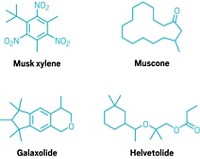Advertisement
Grab your lab coat. Let's get started
Welcome!
Welcome!
Create an account below to get 6 C&EN articles per month, receive newsletters and more - all free.
It seems this is your first time logging in online. Please enter the following information to continue.
As an ACS member you automatically get access to this site. All we need is few more details to create your reading experience.
Not you? Sign in with a different account.
Not you? Sign in with a different account.
ERROR 1
ERROR 1
ERROR 2
ERROR 2
ERROR 2
ERROR 2
ERROR 2
Password and Confirm password must match.
If you have an ACS member number, please enter it here so we can link this account to your membership. (optional)
ERROR 2
ACS values your privacy. By submitting your information, you are gaining access to C&EN and subscribing to our weekly newsletter. We use the information you provide to make your reading experience better, and we will never sell your data to third party members.
Biological Chemistry
Molecular Target Discovered For DEET Bug Repellent
Study finds that N,N-diethyl-m-toluamide (DEET) blocks certain insect olfactory receptors
by Rachel Petkewich
March 13, 2008
Since World War II, people worldwide have liberally applied N,N-diethyl-m-toluamide, better known as DEET, to ward off blood-feeding insects, such as mosquitoes, that can transmit malaria and other diseases. But no one has known exactly how the most commonly used active ingredient in topical bug repellants worked until now.
Leslie B. Vosshall and colleagues at Rockefeller University report that DEET inhibits certain mosquito and fruit fly olfactory receptors (Science, DOI: 10.1126/science.1153121).
Previous work by other researchers had shown that DEET affects the insect's ability to sniff out human odors, such as those caused by lactic acid. But Vosshall and colleagues are the first to pinpoint DEET's molecular targets: olfactory receptors that form a complex with a coreceptor called OR83b. To find these receptors, the researchers combined a genetic approach with an in vitro reconstitution of insect odorant receptors.
Knowing how DEET affects receptors could lead to new insect repellents that, for example, could be safely used on young children. "We can use high-throughput, small-molecule screening to identify novel compounds that have greater efficacy and selectivity than DEET," Vosshall says.






Join the conversation
Contact the reporter
Submit a Letter to the Editor for publication
Engage with us on Twitter